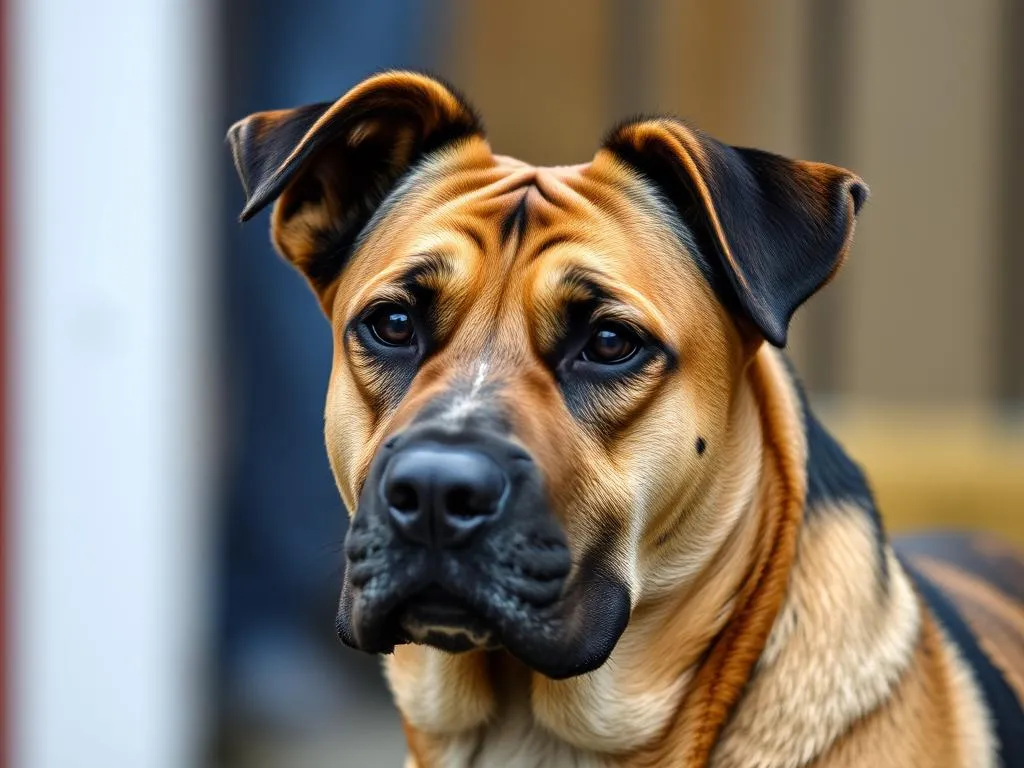
Introduction
Guard dogs play a crucial role in enhancing home security while providing companionship. With their instinctive protective nature, these dogs can deter intruders and offer peace of mind to their owners. Beyond their guarding capabilities, many dog owners appreciate the loyalty and affection that these breeds provide as family companions.
In this article, we will explore various guard dog breeds that don’t shed, highlighting their characteristics, benefits, and training requirements. Selecting the right breed is essential for ensuring compatibility with your lifestyle, so we will guide you through the key considerations to keep in mind.
Understanding Guard Dogs
Definition of Guard Dogs
Guard dogs are specifically trained to protect their owners and property. Unlike watchdogs, which primarily alert their owners to potential threats, guard dogs are trained to take action if necessary. Protection dogs, on the other hand, are trained for more specialized roles, often involving advanced obedience and defense techniques. Understanding these distinctions can help you choose the right breed for your needs.
Characteristics of Effective Guard Dogs
An effective guard dog possesses several key traits:
- Temperament Traits: Loyalty, intelligence, and alertness are fundamental characteristics. A good guard dog should be protective yet socialized enough to distinguish between a friend and a foe.
- Size Considerations: While larger dogs often intimidate intruders, smaller breeds can also be effective guard dogs if they have the right temperament.
- Training Requirements: Effective training is crucial for any guard dog. Some breeds may require more training than others, depending on their natural instincts and intelligence.
Benefits of Choosing Low-Shedding Guard Dogs
Health and Hygiene Advantages
One of the notable benefits of guard dog breeds that don’t shed is the health and hygiene advantages they offer. Low-shedding breeds produce fewer allergens, making them an excellent choice for allergy sufferers. This can lead to a cleaner home environment with less frequent vacuuming and fur removal.
Maintenance and Grooming
Grooming needs vary among dog breeds, but low-shedding breeds typically require less maintenance. Regular brushing can minimize matting and tangling while keeping their coats healthy. Although some low-shedding breeds may need professional grooming occasionally, the overall grooming time and costs are often lower than those for high-shedding breeds.
Lifestyle Compatibility
Low-shedding guard dogs are particularly suitable for apartment living and families with children or other pets. Their reduced shedding means less mess in your living space, making it easier to maintain a tidy home. Moreover, many low-shedding breeds are adaptable and can thrive in various living situations.
Popular Guard Dog Breeds That Don’t Shed
Overview of Low-Shedding Breeds
When selecting a guard dog, it’s essential to consider criteria such as size, temperament, and guarding ability. Below are some popular low-shedding breeds that excel in guarding roles.
Detailed Profiles of Each Breed
Poodle (Standard)
- Size: Standard Poodles typically weigh between 40-70 pounds.
- Temperament: Intelligent, alert, and eager to please, making training relatively easy.
- Training Needs: Requires consistent training and socialization from a young age.
- Guarding Instincts: While not traditional guard dogs, they are protective of their family and can be trained for guarding tasks.
Portuguese Water Dog
- Size: Typically weighs between 35-60 pounds.
- Temperament: Energetic, intelligent, and friendly; they bond closely with their families.
- Training Needs: Enjoys training and excels in obedience and agility tasks.
- Guarding Instincts: Naturally protective and can serve as an effective watchdog.
Schnauzer (Giant)
- Size: Weighs between 55-85 pounds, depending on the individual dog.
- Temperament: Loyal, intelligent, and alert; they are known for their strong guarding instincts.
- Training Needs: Requires consistent training and socialization due to their strong-willed nature.
- Guarding Instincts: Excellent watchdogs and protective of their families.
Belgian Malinois
- Size: Weighs between 40-80 pounds.
- Temperament: Highly intelligent, energetic, and loyal; they require mental and physical stimulation.
- Training Needs: Needs extensive training and socialization; often used in police and military work.
- Guarding Instincts: Naturally protective and excels in guarding and protection tasks.
Basenji
- Size: Weighs between 22-24 pounds.
- Temperament: Independent, smart, and alert; known as the “barkless dog” due to their unique vocalizations.
- Training Needs: Can be challenging to train but responds well to positive reinforcement.
- Guarding Instincts: Alert and watchful; they can serve as effective watchdogs.
Training Your Guard Dog
Basic Training Principles
Successful training begins with early socialization. Exposing your guard dog to various people, animals, and environments will help them develop confidence and good behavior. Basic command training is essential for establishing obedience and ensuring that your dog can respond appropriately in various situations.
Specific Training for Guarding Tasks
Instilling protective instincts in your guard dog involves specific training techniques. Start by teaching your dog commands that reinforce their role as a protector. Use positive reinforcement to build a bond of trust and loyalty. This relationship is crucial for effective guarding behavior.
Continuing Education and Socialization
Ongoing training and socialization are vital. Even after your guard dog has learned the basics, continuous education will help reinforce good behavior. Regular interaction with other pets and people will ensure your dog remains well-adjusted and less prone to aggression.
Considerations Before Choosing a Guard Dog
Assessing Your Lifestyle
Before bringing a guard dog into your home, assess your lifestyle and living situation. Consider space requirements, energy levels, and family dynamics. Some breeds may require more exercise and space than others, so it’s essential to match a dog’s needs with your lifestyle.
Financial Commitment
Owning a dog entails both initial and ongoing financial commitments. Initial costs may include adoption fees or purchase price, while ongoing costs can include food, grooming, and veterinary care. Understanding these costs will help you make an informed decision.
Time Commitment
Time is a significant factor in dog ownership. Guard dogs require daily exercise and mental stimulation. Additionally, dedication to training and socialization is crucial for raising a well-rounded guard dog. Ensure you have the time to invest in your new furry companion.
Conclusion
Choosing a guard dog breed that doesn’t shed offers numerous benefits, including reduced allergens, easier maintenance, and compatibility with various lifestyles. By considering your individual needs and the characteristics of different breeds, you can find a loyal companion that also serves as an effective protector. Owning a guard dog is a rewarding experience, providing both security and companionship for years to come.
FAQs
What are the best low-shedding breeds for families?
Some of the best low-shedding guard dog breeds for families include the Standard Poodle, Portuguese Water Dog, and Schnauzer. These breeds are known for their friendly dispositions and protective instincts.
How much exercise do guard dogs need?
Most guard dogs require a significant amount of exercise, typically ranging from 30 minutes to two hours daily, depending on the breed. Regular physical activity is essential for their mental and physical well-being.
Are low-shedding breeds more expensive?
While the initial costs can vary, low-shedding dog breeds may have higher grooming costs due to their coat care requirements. However, they often save on cleaning and maintenance in the long run.
Can I train a rescue dog to be a guard dog?
Absolutely! Many rescue dogs can be trained to become effective guard dogs. The key is to evaluate the dog’s temperament and behavior, as well as to provide consistent training and socialization.
What is the average lifespan of guard dog breeds?
The average lifespan of guard dog breeds varies, but many live between 10 to 15 years. Factors such as genetics, care, and environment play significant roles in their overall longevity.









